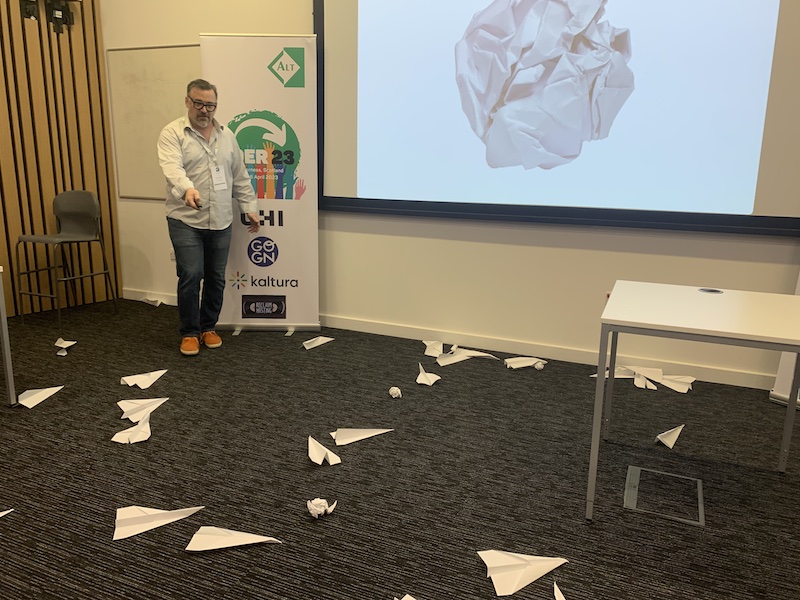
Spider cats and super peeps
I was at the OER23 conference in Inverness last week, hosted by UHI, so here are some snippets of thought.
First up, we hosted a GO-GN one day workshop with 16 attendees. It was great to get back to a fuller session after trialling a smaller one as we emerged from lockdown last year. We used this event toi launch the super-duper mega edition Research Handbook. This combines the Research Methodology guide, the Conceptual Frameworks guide and the Research Reviews, plus other useful openly licensed resources. It is intended as a growing resource so we will add more to it. If you’re doing any research, but particularly related to open education, it’s an excellent starting point.
The conference had three fascinating keynotes and a keynote panel. The first of these was from Rikke Toft Nørgård on Hyper-Hybrid Futures. She took the idea of hybrids (like the spider cat image that has haunted me since) and then hyper-hybrids (the combination of two hybrids) to think about possible futures. This appealed to me because it is taking the use of metaphors that I like so much and going further with it. Whereas my metaphors book mainly concentrates on the past and present, what Rikke was proposing here was using these combinations to embark on speculative design and make changes to our present designed on the future we want to bring to fruition. I also admired the manner in which she used the keynote to think through ideas, I like a keynote that says “I’m not sure what this means but I think there is something there.” It also introduced me to the terms “hopepunk” and “grimdark“.
The next keynote was from Anna-Wendy Stephenson, a UHI academic and musician. Anna-Wendy leads the Applied Music degree, and she gave a very powerful talk on the importance of place and connections. The course allows students to stay where they reside, for example in the Outer Hebrides, while connecting, learning and playing with others. At the Open University we often make a good case about the importance of distance education to allow people to enter higher ed who might be excluded otherwise because of job or carer commitments, for example. But what I don’t think we emphasise enough, and what Anna-Wendy’s talk made me appreciate, is that distance ed allows people to stay embedded in their local culture. This is very important for folk music, but it could also be significant in other disciplines also (history, literature, ecology). It’s another branch to open education – open as in embedded locally.

I introduced Dave Cormier for the final keynote, and despite the obligatory ribbing, he gave a very thought-provoking talk. He has been developing the pedagogy of abundance idea, and used this talk to explore this in particular reference to AI. He deployed the excellent metaphor of autotune for knowledge – in the way in which autotune removed the ‘flaws’ from a singer’s voice made everything pitch perfect, but also kinda boring and uniform. The same may happen with ChatGPT – it effectively extends existing bases of writing, making outputs uniform. This is quite useful if you have to produce a standard report, but less beneficial if we need to understand complexity. This made a connection for me back to the first keynote, how we will need radical (or preposterous to use Rikke’s term) ideas to cope with future issues. There were also paper aeroplanes.
It was great to be back at a fully operational OER conference. This was my 10th consecutive one, and it is now a truism that the sun always shines on the OER conference as we had a glorious few days in Inverness. The conference isn’t really about OER anymore, which is fine, it has evolved into a ‘thinking about aspects of openness in education’ conference and is still the most thought-provoking and engaging one I attend.


3 Comments
Pingback:
Pingback:
Bohemian Culture
Buen post.